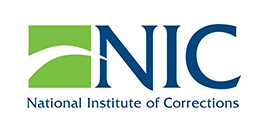EBDM Starter Kit
1n: Developing Meeting Goals and Agendas
Navigating the Roadmap
Activity 1: Build a genuine, collaborative policy team.
Introduction
As the stewards of the policy team, the local coordinator and the team chair are responsible for ensuring that policy team meetings are productive. This means crafting meeting goals and an agenda that move the group forward in a deliberate fashion.
You cannot assume that just because the key policymakers are together in a room the team will naturally make progress. A clear set of goals and agenda for the meeting must be developed and circulated to the team prior to the meeting so that they understand the purpose and focus of the meeting and come prepared to work toward specific outcomes.
Purpose
To provide local Initiative coordinators with information and resources that will assist them in developing meeting goals and agendas
Participants
This document is geared toward local coordinators. Local coordinators may share this information with others (e.g., the team’s chair or another member who at times may assume responsibility for developing meeting goals and agendas) as appropriate.
Instructions
In establishing the goals for a meeting, consider the following questions:1
- What are the purposes of the meeting? What are you hoping to achieve in relation to the content and the process of the meeting?
- Content goals: What do you think is important for people to know, be exposed to, and have discussed by the end of the meeting? What decisions have to be made by the end of the meeting? What should be accomplished?
- Process goals: What messages and behaviors concerning the way (norms, structures) this group will/should operate do you want to establish or reinforce?
- Develop these into clear statements of the goals for the meeting.
- How do the meeting goals fit into the longer-term goals, mission, vision, etc., of the policy team?
In planning the agenda for a meeting, consider the following:2
- Consider the goals you developed above. Break these down into three categories:
- Information items: This is information that you need to share with policy team members (e.g., results from a study or article) that do not require discussion or feedback.
- Discussion items: These are the topics that are up for discussion, feedback, and/or development by team members (e.g., the team may discuss how arrest decisions are made).
- Decision items: The team should spend the majority of its time coming to agreement about certain topics or determining how to move forward (particularly once the team has been established and has been meeting regularly for some time). Strive to focus on decision items for two-thirds of your team meeting time.
- Determine the chronology of the agenda items:
- ls there a logical progression of activities? For example, do you move from general to specific, from specific to general, or back and forth?
- Do transitions from one agenda component to another seem smooth?
- Are the activities consistent with the process development of the group? For example, activities that generate heavy conflict or personal vulnerability should probably not be the first items on the agenda.
- The meeting leader does not have to take responsibility for all the items on the agenda. Assign other policy team members to lead different parts of the agenda as appropriate. (Make sure to tell them ahead of time what is expected of them!)
- You may begin a meeting by checking in with team members regarding their progress in accomplishing their “homework” since the last meeting. (This is where creating meeting records that remind members of their responsibilities comes in handy!) Regularly checking in with everyone about their progress will encourage accountability.
- Include as the final agenda item next steps and action planning. This will ensure that the group discusses what will happen in between this meeting and the next.
- Consider whether the agenda accomplishes your meeting goals.
Tips
When developing agendas, you might consider the following:
- Is there a balance between lecture/presentations and participatory activities? Between “light” discussions and “deep” (e.g., potentially conflicting) discussions? In thinking about balance, be careful not to overload people with too much of one thing.
- What materials will you need for the meeting? How will information be presented—verbally, on a flip chart, on handouts that can be read later?
- Will the physical space and environment accommodate your goals and agenda? For example: Is there enough space to break into smaller groups? Is there wall space for hanging up flipchart paper? Can the tables and chairs be moved to meet your needs?
- What do your team members want to cover during the meeting? Soliciting feedback or input from policy team members before finalizing the agenda is important to gaining their buy-in.
- Is the agenda realistic in terms of timing? Remember: everything takes longer than you expect it to!
1 NIC, 1993, p. 23.
2 Ibid.
Example
Yamhill County, Oregon, Policy Meeting Goals and Agenda
Additional Resources/Readings
CEPP. (2006). The role of facilitators and staff in supporting collaborative teams. Retrieved from
http://www.collaborativejustice.org/docs
McGarry, P. (1993). Essential ingredients for success. In National Institute of Corrections, The intermediate sanctions handbook: Experiences and tools for policymakers (pp. 21–26). Retrieved from http://nicic.gov/library/000213
SMART Technologies. (2004). Using group process techniques to improve meeting effectiveness. Retrieved from http://www.effectivemeetings.com/teams/teamwork/creighton.asp
Woodward, B. (1993). Establishing and maintaining the policy team. In National Institute of Corrections, The intermediate sanctions handbook: Experiences and tools for policymakers (pp. 27–34). Retrieved from http://nicic.gov/library/000213
PDF/Printer Friendly Version of Section

